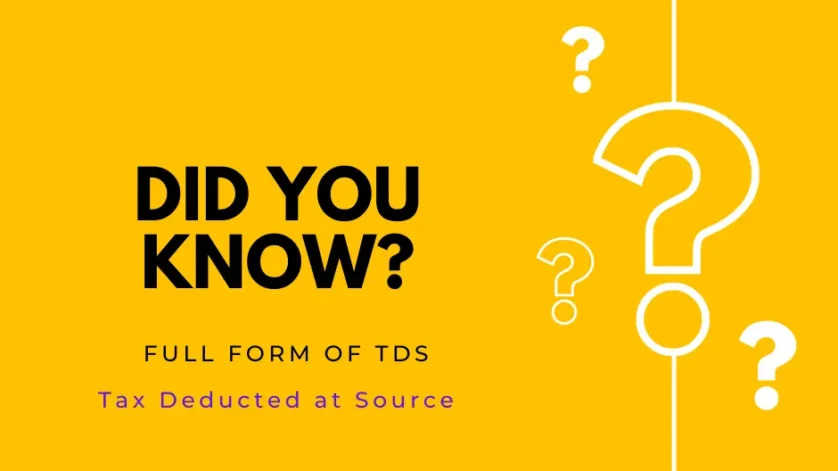TDS Full Form
Tax Deducted at Source (TDS) is a mechanism of collecting tax at the source of income. Under this mechanism, the person making payment of income to another person is required to deduct a certain percentage of tax at the time of making such payment. The tax so deducted is required to be deposited with the government on behalf of the person whose income is being deducted.
TDS is applicable on various types of income such as salary, interest, rent, commission, professional fees, etc. The rate at which TDS is deducted varies depending on the type of income and the quantum of payment. For example, the TDS rate on salary income is determined based on the employee’s income level and the tax slab applicable to them, whereas the TDS rate on interest income is fixed at 10% for resident individuals and 20% for non-resident individuals.
TDS is applicable to both residents and non-residents of India. However, in the case of non-residents, TDS is applicable only if the income is sourced in India or has a nexus with India. The TDS deducted from the non-resident’s income is subject to the provisions of Double Taxation Avoidance Agreement (DTAA), if any, between India and the country of residence of the non-resident.
The person deducting TDS is required to issue a TDS certificate to the person whose income has been deducted. The TDS certificate contains details such as the amount of TDS deducted, the nature of income, the rate of TDS, and the date of payment of TDS to the government. The person whose income has been deducted can claim credit for the TDS deducted while filing their tax return.
TDS is an effective mechanism for the government to collect tax revenue as it ensures that tax is collected at the source of income. It also helps in reducing tax evasion and improves tax compliance. However, it can be a cumbersome process for taxpayers, especially those who have multiple sources of income or those who are subject to TDS at higher rates. To ease the compliance burden, the government has introduced various measures such as reducing the TDS rates, exempting certain types of income from TDS, and providing for a simplified TDS return filing process.
TDS is an important mechanism for collecting tax revenue and ensuring tax compliance. It is applicable to various types of income and both residents and non-residents of India. While it can be a cumbersome process for taxpayers, the government has taken measures to ease the compliance burden.

